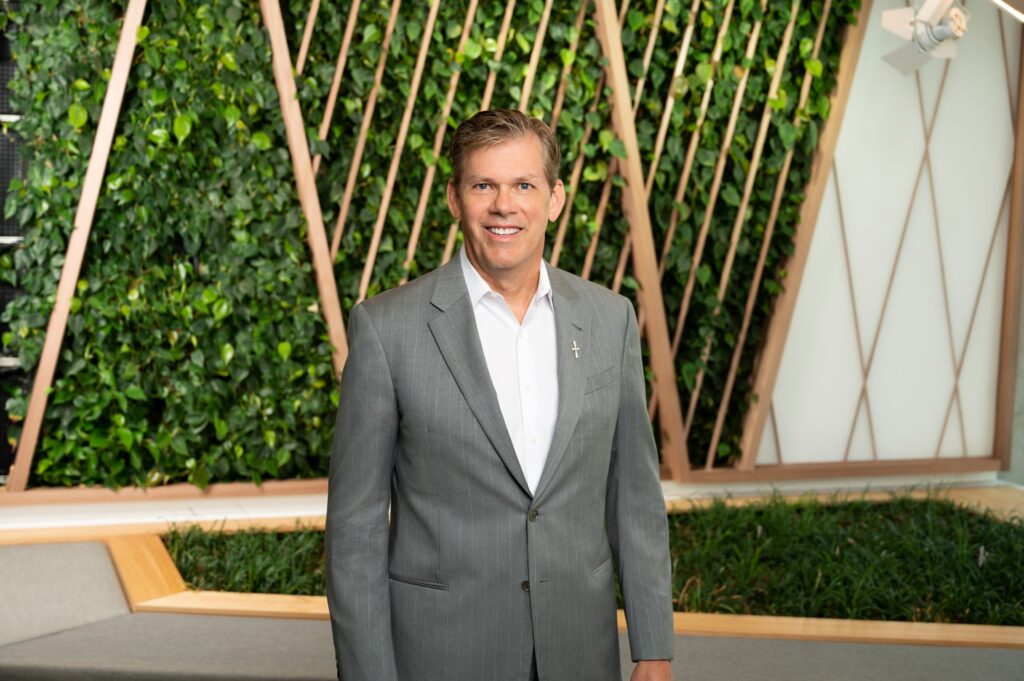Swipe & Serve
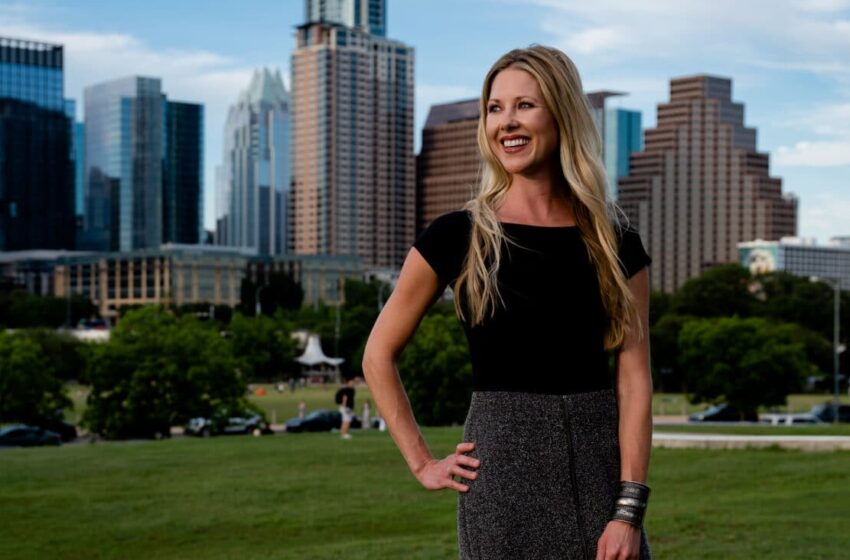
Brooke Waupsh on how her startup, Swoovy, brings people together through volunteering.
Dating via app has been commonplace for years—but it can still be an uncomfortable, inconsistent experience.
A few years ago, Austinite Brooke Waupsh had a flash of insight. She had been talking to single friends, and they, like most, were sharing frustrations of not meeting real people or having meaningful connections through dating apps. One of them read an article from a dating expert that said volunteering was a great way to get to know someone and establish a deeper connection. Waupsh’s entrepreneurial side kicked in. She instantly saw an opportunity to make that happen through a new kind of app that brought together the seemingly unrelated worlds of dating and volunteering. Knowing that nonprofits were dying to get more volunteers in the door but struggling to activate a mainstream audience, she felt she could drive benefit on both sides in a unique and modern way.
Turns out, Waupsh was onto something. As she ran the idea past friends and nonprofits, she got a universally enthusiastic response. Soon she had founded Swoovy, which allows singles to easily connect with others around volunteer events in their area.
But Waupsh’s vision for Swoovy was larger than just a dating app. As the events of 2020 put in-person dating on hold, Waupsh ramped up both digital volunteering opportunities and the corporate side of the platform. Today, companies can now use Swoovy to create a fast and effective volunteering program that authentically engages their employees.
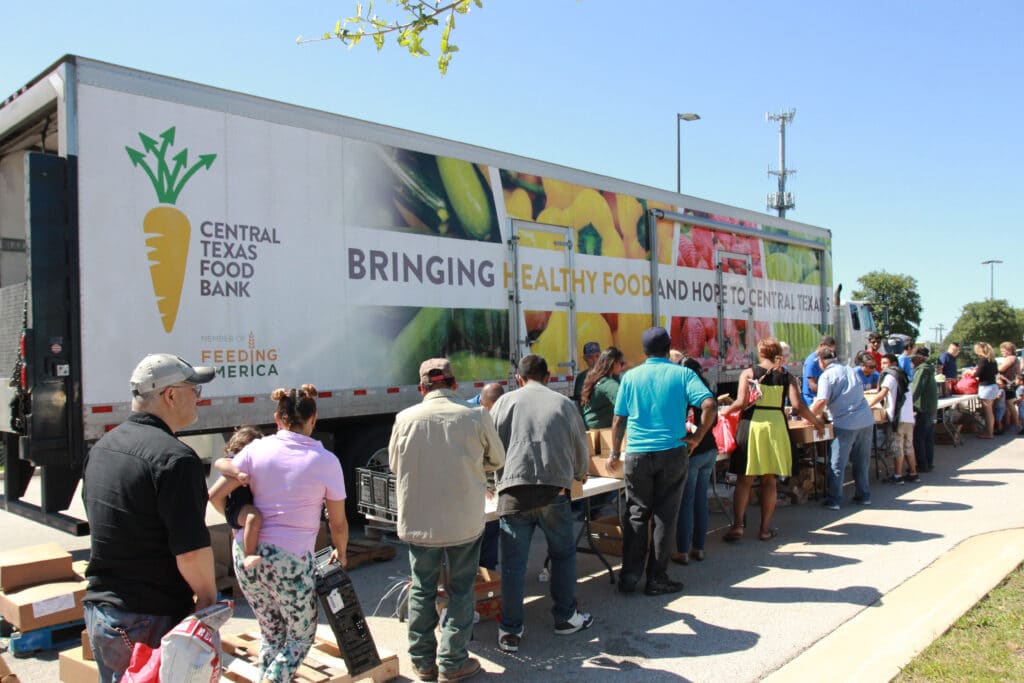
Waupsh, who has served as a mentor for the Young Women’s Alliance Austin and has led practicum courses at UT’s McCombs School of Business, told us about her road toward entrepreneurship, her experience pitching in a world where almost all venture funds go to men, and why smart companies are evolving past the traditional “day of service.”
What was your career like up to Swoovy? Did you always have an entrepreneurial impulse?
Absolutely so. Leading up to Swoovy, my entire career was in marketing and brand strategy, starting at global advertising agencies. I worked on large brands like Coors, Clorox, Charles Schwab.
I’m an Austin native, but I had spent time in Denver and San Francisco. I came back to Austin and took a job with an early-stage fintech company—right in time for the financial fallout of 2008! That company had a SaaS product that helped community banks and credit unions compete. As I was leading the roll out of a consumer brand strategy for the community financial institutions, growing an organization supporting the brand from two to 200 people, I realized I did have that entrepreneurial spirit and a desire to make things happen. Despite the difficult economic environment, we were very successful. But once the company got bigger, I decided I missed the early days of organization development, and the challenge of building something from scratch.
I went out on my own and consulted for five years. I loved the challenge of working with early-stage companies where you have to be really creative with minimal resources and where you spend your time. You see the fruits of your labor every step along the way. I also wanted to do something with impact. And then the idea for Swoovy came along.
That was the Eureka moment: Oh my gosh, we can bring these two worlds together for a win-win.
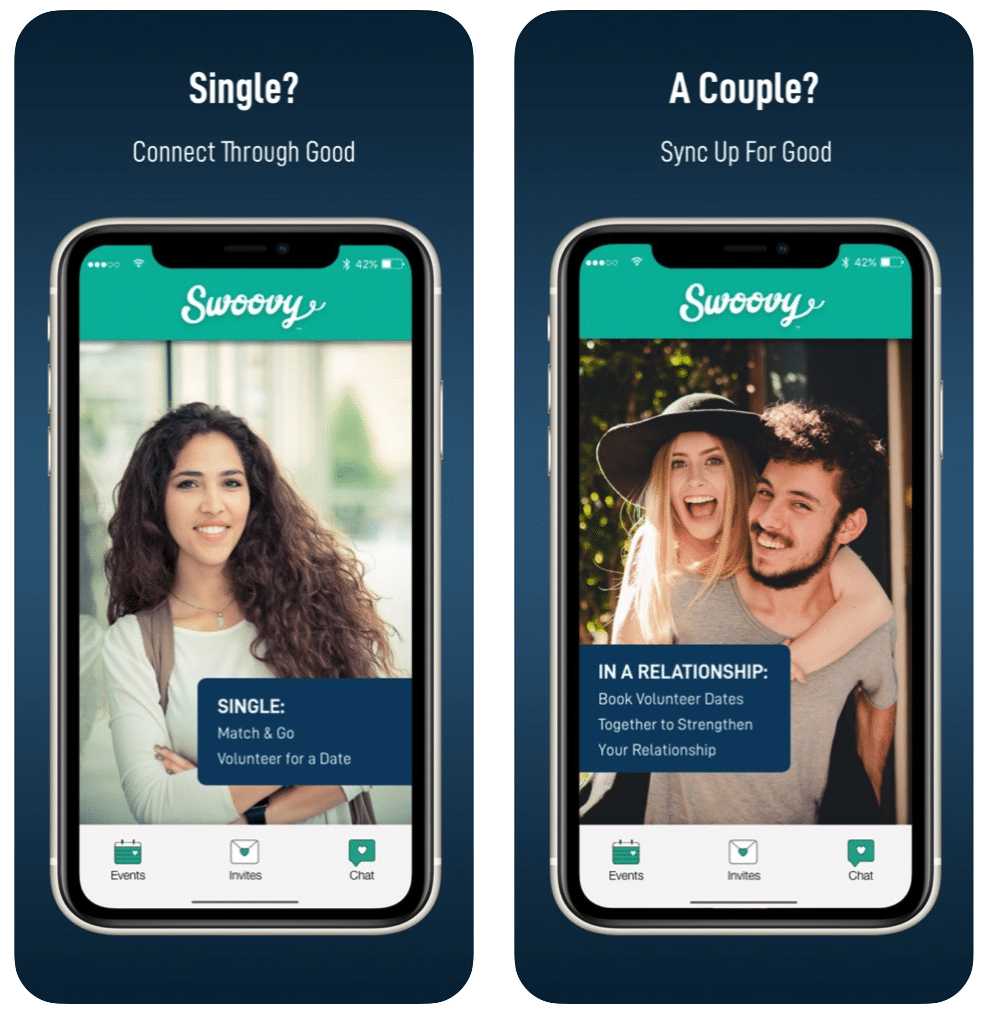
Was there a Eureka moment when you came up with the idea of combining a dating app with volunteering?
It was a Eureka moment that came from conversations with friends. If your not single, we all at least know someone who is and has used dating apps, so you know the frustrations. Even though the industry has grown tremendously over the past several years, the frustrations are always around: not meeting genuine people, wasting time, not connecting through shared interests.
One of my friends had read something from a dating expert that said volunteering was a great way to establish a relationship. That was the Eureka moment: Oh my gosh, we can bring these two worlds together for a win-win.
Nonprofits have always needed help getting volunteers in the door. I saw this as an opportunity to modernize how they work, a lot like my earlier work with community banks, which are perceived as being maybe a little dusty, having outdated technology. While 90 percent of people say they want to volunteer, only one in four actually do it. I fell into that bucket myself. Life happens and you prioritize everything else over volunteering. We looked at the data and found that the reasons people don’t volunteer it’s time-consuming to figure out how it all works, but the other big piece was that people want someone to go with. So Swoovy launched as a new kind of dating app that would update the way people bond and the way nonprofits recruit.
What were the first few months like after you had the idea for the app?
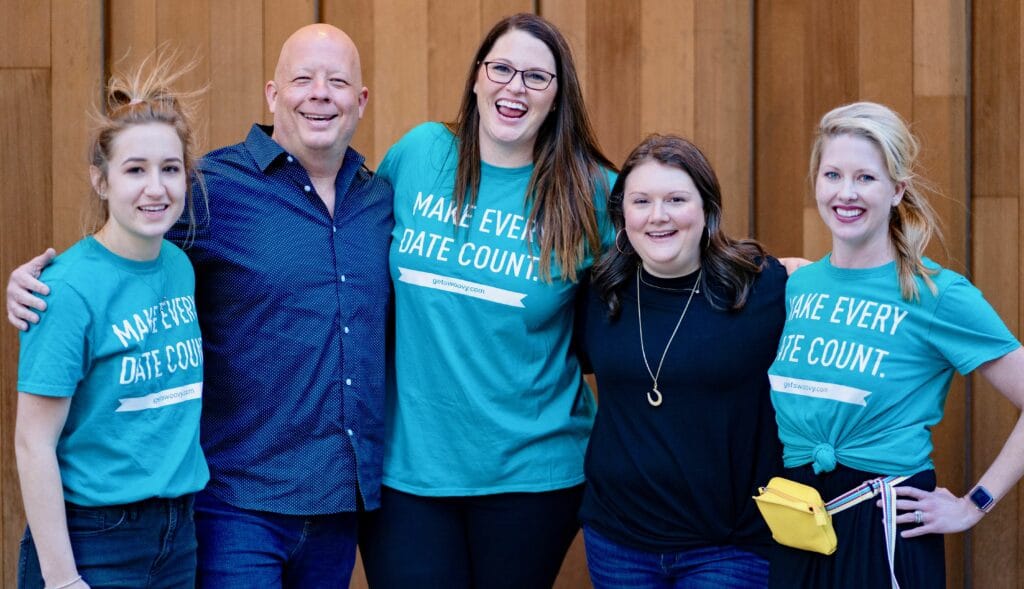
The first step was to vet the idea. Your idea for a product or startup might not be as great or marketable as you think. So I shared the idea with as many people as possible. I kept getting the instant wide eyes and very positive reactions. Once I’d vetted it, I went into research mode. I found a lot of stats from the dating world and learned about how people use dating apps. And I saw the depression it can cause too and became even more motivated and passionate about offering people this better option to connect, without giving up what they love and rely on, technology.
I also started calling nonprofits. I wanted to know—would they want to be associated with a dating app? There are some negative connotations. But 100 percent of that first list said, “This is fantastic. How do we get listed?”
The development of the app itself was a challenge. We talked with a lot of development agencies early on. When you’re first laying out a technical product that doesn’t exist yet, you’ll get estimates that are $200,000, $650,000, even more. I was like, “I don’t have any money!” I went back to a developer I worked with at the fintech company. He partnered with me to build the first iteration of Swoovy, and we got investors. Our first investment came from the previous CFO of the fintech company, who believed in me and in the product. He funded the initial rollout and testing.
At what point did you decide to expand from dating opportunities to employee engagement and solo volunteering opportunities?
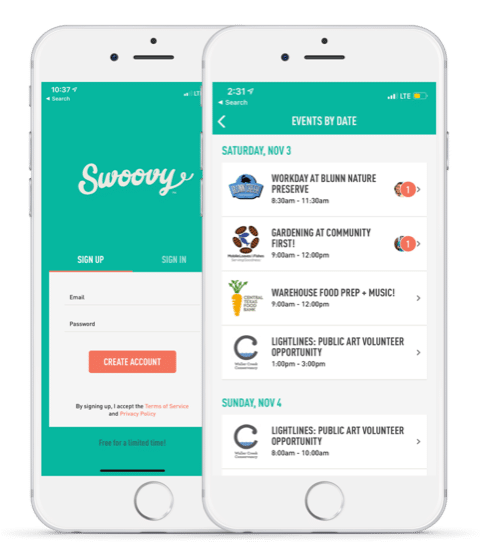
When COVID hit. Before, we were at a peak in getting new users and having a lot of conversations with future investors. But when everything shut down in March 2020, so did our investors—how could they invest in something when the market was not stable and we were promoting people getting together in person. Our customer engagement completely dropped as singles entered an unknown world. At that point, I had to make a decision: Do I walk away from this?
It was always part of the vision to extend the service into other facets of life beyond dating, so I decided to use the downtime to go into full research and development mode to build upon what we had created and expand into the corporate space, while also opening the app up to individuals to easily find opportunities to help nonprofits, who now were in dire need. COVID gave us a pause to do the appropriate research and start building out the platform. I was back on the phones with nonprofits through much of 2020. I wanted to understand what they were going through. I became even more passionate about helping them, because they were in a world of cancelled fundraisers and very few in-person volunteers. We started brainstorming: What is virtual volunteering? How can you leverage people from home?
We opened the app up to individuals and made it easy for anybody to find a volunteer opportunity, remote or in person. We also built out additional support to build capacity for nonprofits’ recruitment and fundraising efforts, and helped them drive awareness and tell their story to the Swoovy audience.
People reach out all of the time and ask when the dating app will be in their city. As the platform is first populated with users through their companies in different cities, we can then turn on the dating app. Alone, the dating app is hard to expand. You have to put a lot of marketing dollars into each new city to get enough people in.
What are the most popular types of volunteering opportunities?
We cover a myriad of cause categories. People love animals, so those always rise toward the top. Parks and rec is popular too. The food bank is #1—it’s a really fun on a date or team outing. The Central Texas Food Bank here in Austin is a really great atmosphere. Our database now has over 130,000 on profits we can support nationwide.
When you’re in front of a room of investors, the questions they ask women versus men are very different. With women, there is a lot of leading and challenging: How do you expect to overcome this? Why won’t this take your business down?
You’ve raised a lot of money. How is that process been? Do you feel that you face any particular challenges as a woman.
Yes, and fundraising will always continue as we’re in growth mode. Harvard Business Review just released research showing that women founders and C-level women only received 2.8 percent of investment from venture capital in 2021. In 2020, it was 2.2 percent. There’s definitely a bias, and I’ve experienced it. As part of my fundraising strategy I signed up for as many pitch events as possible, especially in front of angel networks. I was always in the top three, but I was never getting any checks.
When you’re in front of a room of investors, the questions they ask women versus men are very different. With women, there is a lot of leading and challenging: How do you expect to overcome this? Why won’t this take your business down? It’s unfortunate that it happens, but there’s actually data that shows women-led companies have a better ROI and are more efficient operationally.
What pitching advice would you give to someone who’s new to it?
Make sure you’ve done all your research and have market validation. Have those numbers as well as industry benchmarks in hand, and be confident in your product or service. You need to be able to succinctly say what you’re offering and where that opportunity is, with numbers. I have hundreds of versions of my pitch anywhere from an hourlong meeting to a 30-minute, 20-minute, 10-minute, 5-minute, 1-minute, and 30 second. You have to be prepared for those different opportunities and get the timing right.
What are your goals for the next couple of years?
$1,000,000 in revenue would be our next big milestone. We’ve been highly focused this past year on building out the technology infrastructure, and world-class sales operations to scale. Our goal is to have a nationwide presence, and be a tide that lifts all boats for nonprofits.
How do you describe the benefits of Swoovy to your corporate customers?
The timing right now could not be better for looking at a great volunteering program. Every CEO, HR leader, and chief people officer has heard of the Great Resignation and is concerned more than ever about keeping their teams engaged. How can they avoid attrition? How can they attract new talent? How do they stand out without a great office space? How do they keep a strong culture and their people connected, even in a hybrid-remote world where people have different comfort levels of getting together?
It’s no longer enough to just offer paid time off to volunteer or just give matching donations to particular nonprofits. Matching programs are great, but you’re asking employees to pull out of their own pockets and not everybody can do that. By having a volunteer program as part of your overall strategy, you’re giving people a way to give back. Each hour of volunteer time is worth $28.54 to a nonprofit, and we help them track that aggregate amount over time—so you can see for example that an employees gave back $3,000 to the community with their time. That not only engages your employees but shows that you’re committed to corporate social responsibility, and recognizing their individual interests vs. choosing a cause for them to support, and how to do it. There’s a big diversity, equity, and inclusion component here too. You’re bringing everyone into your volunteering efforts and showing that you understand their perspectives.
We always recommend that company leaders empower employees in picking volunteer opportunities. Don’t choose for them. You want to understand where their interests lie and put opportunities at their fingertips so they’re not left having to go do that research.
I talked to someone a couple days ago who said she spends 15 hours a week planning out and tracking volunteer opportunities for her company. We help companies get a lot more efficient.
You’d also be surprised how many companies have highly inefficient volunteering programs. A lot of times, it’s somebody tracking volunteer hours in a spreadsheet, and researching opportunities for individual employees for each request that comes in. It gets expensive. I talked to someone a couple days ago who said she spends 15 hours a week planning out and tracking volunteer opportunities for her company. We help them get a lot more efficient with technology to save the internal team time and money.
Employee volunteer programs have been proven to attract and retain good talent, while supporting corporate social responsibility initiatives. Loosing just one employee for a company can cost them over half of their salary to replace—when you look at the ROI of investing in employee engagement programs it’s a no brainer.
Have you ever thought about moving your company elsewhere?
Texas has a lot of opportunity, so we’re very happy being headquartered here. I have considered at some point shifting our headquarters to from Austin to Houston. I have so many contacts out there and a bulk of my team is there now. We were part of the MassChallenge Houston accelerator program. But I love that both Austin and Houston are supporting technology and startups and growing companies. It’s been great for us.

